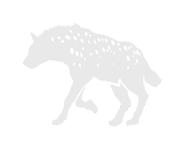Posts

Luggage requirements for your Kruger safari.
For Kruger park safaris, this blog encourages our guest to pack light luggage. We have space for one suitcase and a backpack or laptop bag.

Weather in Kruger National Park and which clothes to pack.
This blog provides the average weather when visiting Kruger National Park and what clothes to pack based on this. You will need a jumpsuit set and a beanie for the cool morning and evening game drives.

Food you will eat on your Kruger National Park Safari
Please note: On our safaris you will have plenty of opportunity to enjoy these dishes, although dietary requirements are catered for, depending on your needs. This is just a brilliant example of everyday lovely foods eaten by the South African Nation.

What to pack on your Kruger National Park Safari
Not sure what to pack on your Kruger National Park Safari? Get it right to prevent paying for overweight luggage! Make sure you pack the right clothes on your Kruger National Park Safari, light cotton in light tones which is always best in our South African hot climate.

Dietary requirements are catered for on your Kruger National Park Safari
One of the biggest concerns and frequently asked questions, if dietary requirements are catered for on a Kruger National Park Safari. YES, all dietary requirements are catered for on a Kruger National Park Safari and on the list of most important information needed from our clients/guests.

The difference between a private game reserve and a Kruger National Park safari
Seeing animals in their natural habitat (inside the Kruger National Park) rather than smaller private game reserves is explained in this blog post.

Historical Places to see in Kruger National Park
The following Historical Sites are only a few of many more to see in the Kruger National Park, however, these are some of the main ones spread across the length of the Kruger National Park.

Kruger National Park rest camp safety and rules
Kruger National Park Rest Camps have rules to ensure your safety. This blog explains a bit more of these rules and why they are important to follow.

Kruger National Park is under threat of Rhino poaching
Kruger National Park is under threat of Rhino poaching, when President Filipe Nyusi (President of Mozanbique) visited Sabie town on Saturday with a message to the local communities to conserve the wildlife in their country, a marauding gang of poachers nearby hunted down one of the country’s prize 12-years-old rhino bulls and butchered the helpless endangered animal’s horn while it was still alive.

Respect Animals well driving thought Kruger National Park
Respect animals when you are driving in the Kruger National Park and keep to the speed limit, because you could accidentally drive over a small creature that you did not see and kill it.

Kruger Camping Safari Version 2.0
A Kruger Camping Safari upgraded! Take an amazing Big 5 game safari in Kruger National Park and enjoy camping in style with beds, cooling and electricity.

Closest Airports to Kruger National Park
Closest Airports to Kruger National Park and Flight Time Recommendations. Planning a Kruger Park Safari fly in instead of transfers.

Staying inside Kruger or close to the Park
There is always the question "where to stay during our Kruger Park Safari"? Kruger accommodation is usually the recommendation, due to a specific mindset and understanding that this is the only option to be able to see the Big 5 as well as other animals.

Whether to fly to Kruger or take a Road Trip
There are so many decisions involved when planning a nice South African Safari, whether to fly to Kruger or take a road trip? When enquiring there's all these little details to keep in mind, and what a tiring process to go through!

Ideas for Excellent Day Tours in Mpumalanga
For the adrenaline and adventure junkies, here are a few exciting ideas for day tours in Mpumalanga: Skyway Trails/Treetop Tours and Zip lining - Experience the fresh air of nature whilst having an exciting adventure and to add to it the beautiful scenery of this picture perfect part of South Africa.

Drought in the Kruger National Park
One of the biggest concerns for Sanparks is the river systems due to water quality and levels. People are however actively involved to restrict water usage (for example irrigation). Some animals do better such as predators do better in these conditions.

Animals to look out for in the rest camps of Kruger National Park on safari
On your visit to the Kruger National park you will find quite a variety of animals right at your doorstep. Below you will see only a few which you will often come across in the Kruger National Park rest camps.

Kruger Mountain and Jock of the Bushveld Route
Embark on a historical exploration by visiting Kruger Country Retreat. We are situated in the Peebles Valley, also known as the Jock of the Bushveld Conservancy. On your stay you will be able to visit one of the Jock of the Bushveld hotspots, awakening the wonderful heart-warming story that still lives on today.

My Back Yard – Close to the Greater Kruger National Park / Sabi Sand
This is the stunning scenery of my back yard in the Greater Kruger National Park. It is definitely worth while to check out our great deals on Luxury Lodge Safaris...

Spring Festival of Flowers in the Greater Kruger National Park Area
It is a wonderful spring day in the Lowveld and Kruger National Park, it is a paradise of flowers that are blooming on our indigenous trees. On our journey through the veld, we encountered some Wildebeest and it made the perfect photo moment.

Entrance Gates of the Kruger National Park
The following are the list of entrance gates of the Kruger National Park: Berg-en-Dal Crokodile Bridge Letaba ...

Leopard one of the Big 5
The South African Leopards (Panthera Pardus) exhibit an astonishing…
